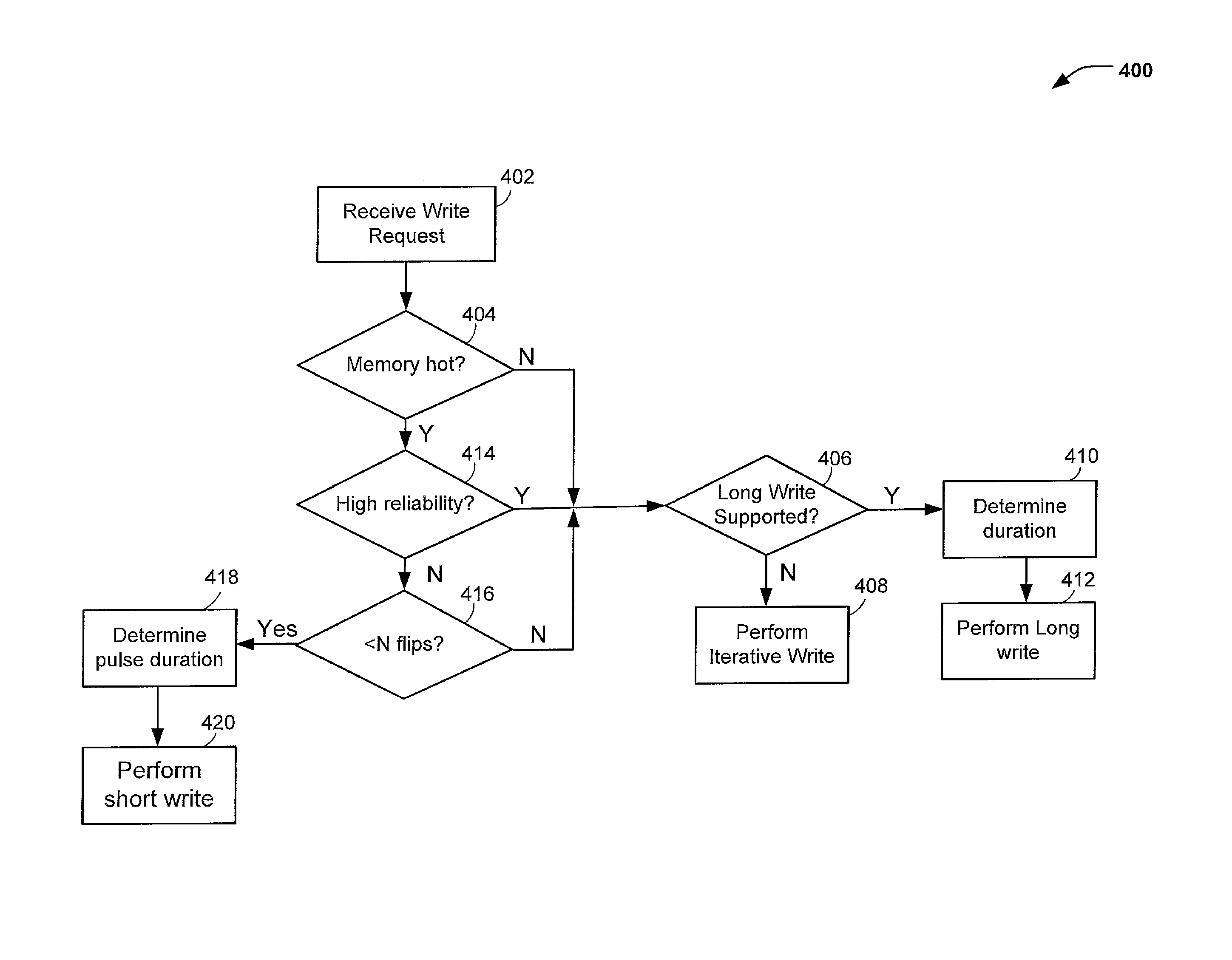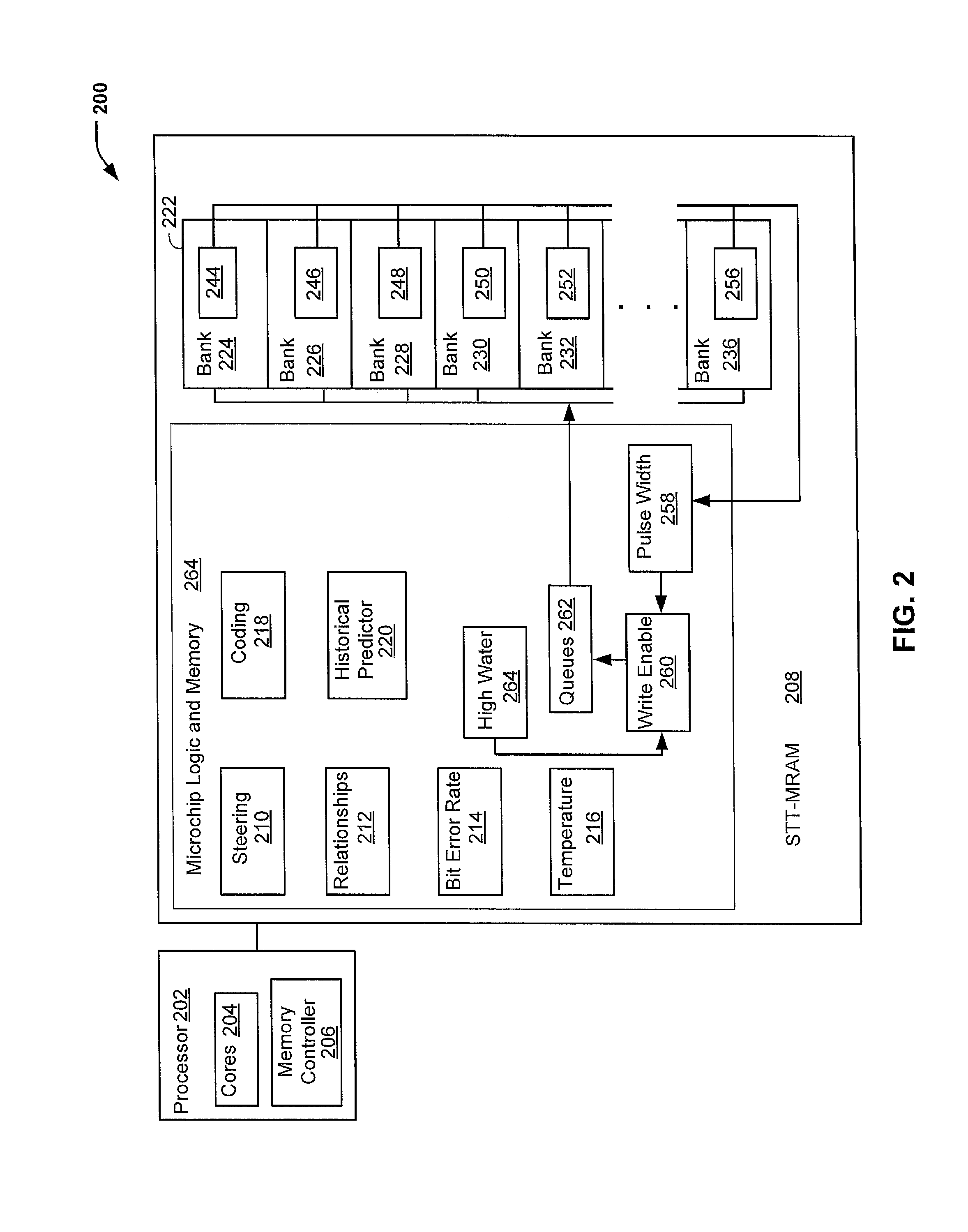Determining and storing bit error rate relationships in spin transfer torque magnetoresistive random-access memory (stt-mram)
a random access memory and spin transfer torque technology, applied in static storage, information storage, digital storage, etc., can solve the problems of increasing write latency and energy consumption, and achieve the effect of reducing power consumption and processing latency and reducing power consumption
- Summary
- Abstract
- Description
- Claims
- Application Information
AI Technical Summary
Benefits of technology
Problems solved by technology
Method used
Image
Examples
Embodiment Construction
[0015]Write performance in an STT-MRAM may depend on a length of a programming pulse width, or the length of the pulse used to write the data. For example, longer programming pulse widths may result in higher power consumption and greater accuracy. The amount of time elapsing during the write operation to the STT-MRAM is referred to as write pulse width, write pulse length, or write latency. An embodiment capitalizes on the fact that the write latency required to achieve a targeted level of reliability is inversely related to the operating temperature of the memory data array and associated logic.
[0016]Embodiments may include adaptive programming pulse widths to write to memory according to stored relationships. The relationships may associate one or more of a bit error rate, a temperature, a voltage, historical predictive data, and coding. Coding may include additional error handling and redundancy processes (e.g., parity coding, error correction code (ECC), and memory mirroring) u...
PUM
 Login to View More
Login to View More Abstract
Description
Claims
Application Information
 Login to View More
Login to View More - R&D
- Intellectual Property
- Life Sciences
- Materials
- Tech Scout
- Unparalleled Data Quality
- Higher Quality Content
- 60% Fewer Hallucinations
Browse by: Latest US Patents, China's latest patents, Technical Efficacy Thesaurus, Application Domain, Technology Topic, Popular Technical Reports.
© 2025 PatSnap. All rights reserved.Legal|Privacy policy|Modern Slavery Act Transparency Statement|Sitemap|About US| Contact US: help@patsnap.com



